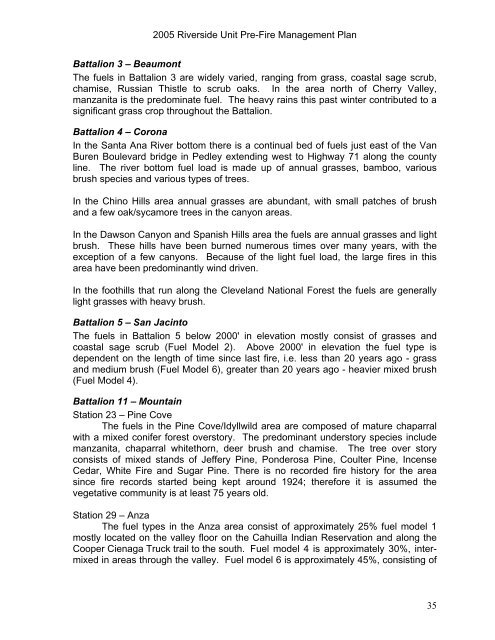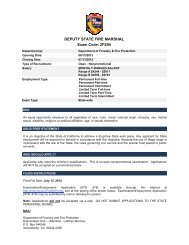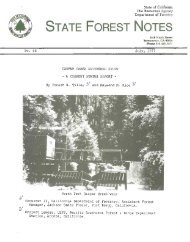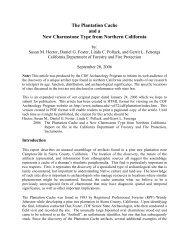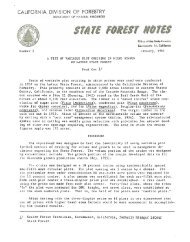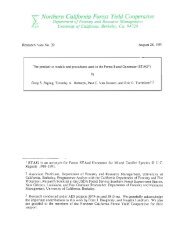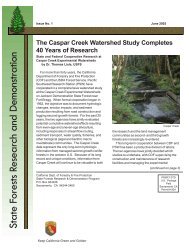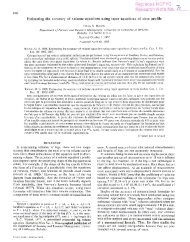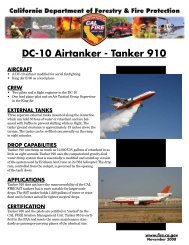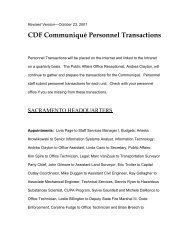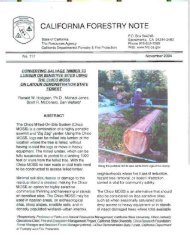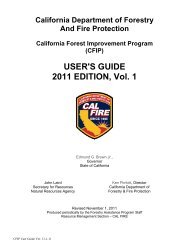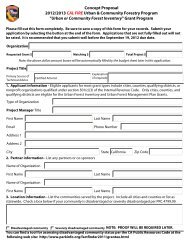Create successful ePaper yourself
Turn your PDF publications into a flip-book with our unique Google optimized e-Paper software.
2005 Riverside <strong>Unit</strong> Pre-Fire Management Plan<br />
Battalion 3 – Beaumont<br />
The fuels in Battalion 3 are widely varied, ranging from grass, coastal sage scrub,<br />
chamise, Russian Thistle to scrub oaks. In the area north <strong>of</strong> Cherry Valley,<br />
manzanita is the predominate fuel. The heavy rains this past winter contributed to a<br />
significant grass crop throughout the Battalion.<br />
Battalion 4 – Corona<br />
In the Santa Ana River bottom there is a continual bed <strong>of</strong> fuels just east <strong>of</strong> the Van<br />
Buren Boulevard bridge in Pedley extending west to Highway 71 along the county<br />
line. The river bottom fuel load is made up <strong>of</strong> annual grasses, bamboo, various<br />
brush species and various types <strong>of</strong> trees.<br />
In the Chino Hills area annual grasses are abundant, with small patches <strong>of</strong> brush<br />
and a few oak/sycamore trees in the canyon areas.<br />
In the Dawson Canyon and Spanish Hills area the fuels are annual grasses and light<br />
brush. These hills have been burned numerous times over many years, with the<br />
exception <strong>of</strong> a few canyons. Because <strong>of</strong> the light fuel load, the large fires in this<br />
area have been predominantly wind driven.<br />
In the foothills that run along the Cleveland National Forest the fuels are generally<br />
light grasses with heavy brush.<br />
Battalion 5 – San Jacinto<br />
The fuels in Battalion 5 below 2000' in elevation mostly consist <strong>of</strong> grasses and<br />
coastal sage scrub (Fuel Model 2). Above 2000' in elevation the fuel type is<br />
dependent on the length <strong>of</strong> time since last fire, i.e. less than 20 years ago - grass<br />
and medium brush (Fuel Model 6), greater than 20 years ago - heavier mixed brush<br />
(Fuel Model 4).<br />
Battalion 11 – Mountain<br />
Station 23 – Pine Cove<br />
The fuels in the Pine Cove/Idyllwild area are composed <strong>of</strong> mature chaparral<br />
with a mixed conifer forest overstory. The predominant understory species include<br />
manzanita, chaparral whitethorn, deer brush and chamise. The tree over story<br />
consists <strong>of</strong> mixed stands <strong>of</strong> Jeffery Pine, Ponderosa Pine, Coulter Pine, Incense<br />
Cedar, White Fire and Sugar Pine. There is no recorded fire history for the area<br />
since fire records started being kept around 1924; therefore it is assumed the<br />
vegetative community is at least 75 years old.<br />
Station 29 – Anza<br />
The fuel types in the Anza area consist <strong>of</strong> approximately 25% fuel model 1<br />
mostly located on the valley floor on the Cahuilla Indian Reservation and along the<br />
Cooper Cienaga Truck trail to the south. Fuel model 4 is approximately 30%, intermixed<br />
in areas through the valley. Fuel model 6 is approximately 45%, consisting <strong>of</strong><br />
35


